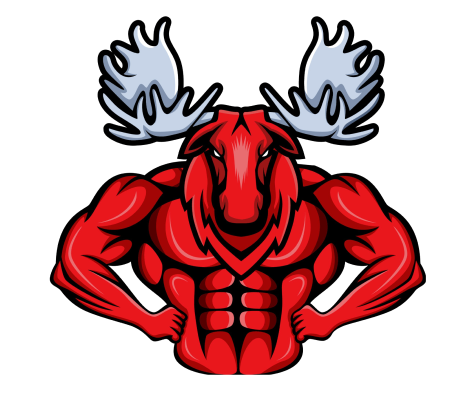Strength isn’t fair. Some people are born with levers that make lifting heavy feel… easy. Longer arms, shorter limbs, favorable muscle insertions—all of it adds up before you ever touch a barbell.
That doesn’t mean you can’t be your version of strong. It means you need to understand the body you were given and train with your mechanics—not against them. Today I’ll show you how to measure your proportions (anthropometrics) and what they mean for the big lifts, plus simple technique tweaks to play to your strengths.
Watch the Full Video
Why Anthropometrics Matter (The Simple Version)
Think of your body like a system of levers. Where a muscle attaches and how long a limb is changes the force required to move a weight—just like pushing a door at the hinge vs the handle. Same bodyweight, same squat depth, totally different effort.
That’s why two lifters can squat the same number, but one looks like they’re sitting down forever and the other pops out of the hole like it’s empty. Strength, skill, and neural drive matter—but your levers set your baseline.
How to Measure Your Levers (Grab a Tape & a Friend)
Measure everything as a percentage of your total height so it scales for everyone.
-
Torso Length: Sit tall. Measure from the base of your butt to the top of your head.
Great for deadlift/squat if < 40% of total height. -
Arm Length (each): Sit/stand with the arm straight out in front. Measure from the back of the scapula to the tip of the middle finger.
Great for deadlift if > 50% of total height. -
Leg Length (inseam proxy): Standing, measure from the sit bones/apex of the butt to the floor.
“Short” for deadlift if < 45% of total height. -
Femur Length (squat key): Seated with knees at 90°, measure from the back of butt to the front of the knee.
Great for squats if < 30% of total height. -
Humerus Length (bench key): Elbow at 90°, measure from elbow crease to AC joint at top of shoulder.
Great for bench if < 19% of total height.
📌 Reality check: Short and stout tends to win in pure leverage terms—shorter bones mean shorter ranges and thicker muscles (cross-section), which is why powerlifters often look compact and dense. Strongman skews taller because of event constraints (stones, platform heights, carries), but the relative lever rules still apply.
What Your Numbers Mean for Each Lift
Deadlift
Helps: Short torso (<40%), long arms (>50%), short legs (<45%).
Why: Keeps the bar closer to your center of mass; shorter “moment arms” at the hip and back.
If you’re disadvantaged (long torso/short arms):
-
Start with a more upright torso: drive knees out over the bar, drop the hips slightly.
-
Pull the slack, wedge the hips forward, and keep the bar glued to your shins.
-
Choose stance/hand position that shortens range (within your federation rules).
-
(Sumo can help some, but I don’t recommend it for everyone.)
🎯 Program to build your pull:
Hercules Fit – full-body strength & hypertrophy that carries to deadlift
https://moosecoaching.com/pages/hercules-fit
Squat
Helps: Short femurs (<30%) and short torso (<40%).
Why: Lets you stay more upright and sit “between your knees” instead of folding.
If you’re disadvantaged (long femurs/long torso):
-
Consider low-bar placement to reduce forward knee travel and leverage your posterior chain.
-
Think “chest points forward” vs “chest collapses.” You can lean without rounding.
-
Drive the knees out and sit between them; feel the top of your hamstrings, not just quads.
-
Own your stance width/toe angle to shorten your effective range.
🎯 Program to refine your squat & balance weak links:
Powerbuilding 2.0 (Strength & Hypertrophy)
https://moosecoaching.com/pages/strength-and-hypertrophy
Bench Press
Helps: Short humerus (<19% of height).
Why: Shorter upper arms = shorter press path and better bottom-end leverage.
If you’re disadvantaged (long humerus):
-
Build triceps hard (close-grip, dips, extensions with loadable ROM).
-
Use a wider grip and a legal, stable arch to shorten range.
-
Program more paused work to own the chest-touch position.
🎯 Upper-body density + press power:
Commercial Gym Strongman (meat-and-potatoes strength that transfers to pressing)
https://moosecoaching.com/products/commercial-gym-strongman?_pos=1&_psq=com&_ss=e&_v=1.0
Copying Elites Won’t Work (Unless You Have Their Bones)
Seeing someone deadlift 800 lb and copying their setup doesn’t give you their levers. Coaching is part science, part art because everyone’s ratios are unique. Use guidelines, then dial in your stances, bar paths, and tempos.
Build Your Plan Around Your Structure
-
Play to your strengths: If you’re a natural puller, maintain it while spending more volume on squat/press.
-
Attack your weaknesses: Turn long-term “disadvantages” into technical superpowers with smart programming.
-
Progress your VO2 and work capacity intelligently: Short, potent intervals layered onto strength (not hours of junk volume).
The Big Picture
No, strength isn’t fair. But it is earned. Understand your levers, train with them, and you’ll stop fighting physics and start stacking PRs. I’m lucky I don’t have a huge natural weakness—but the best athletes I know turned theirs into strengths by design, not by accident.
Lift Heavy. Be Kind.
— Mitchell Hooper
